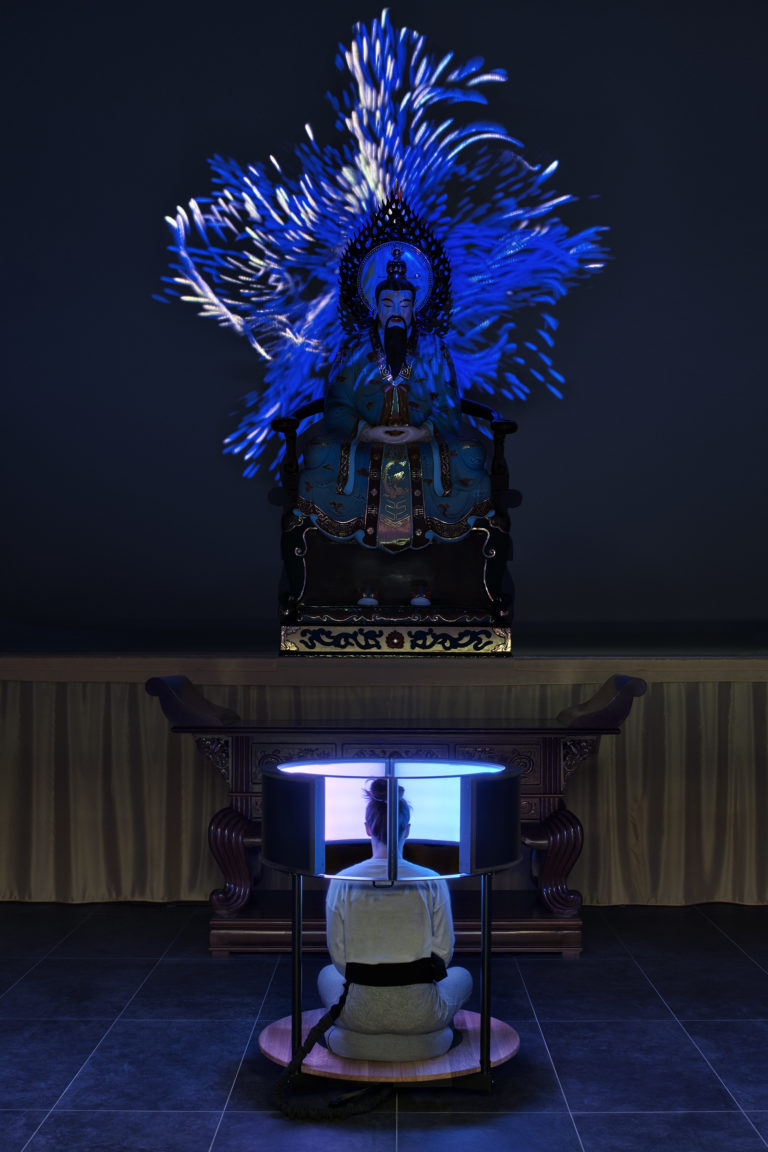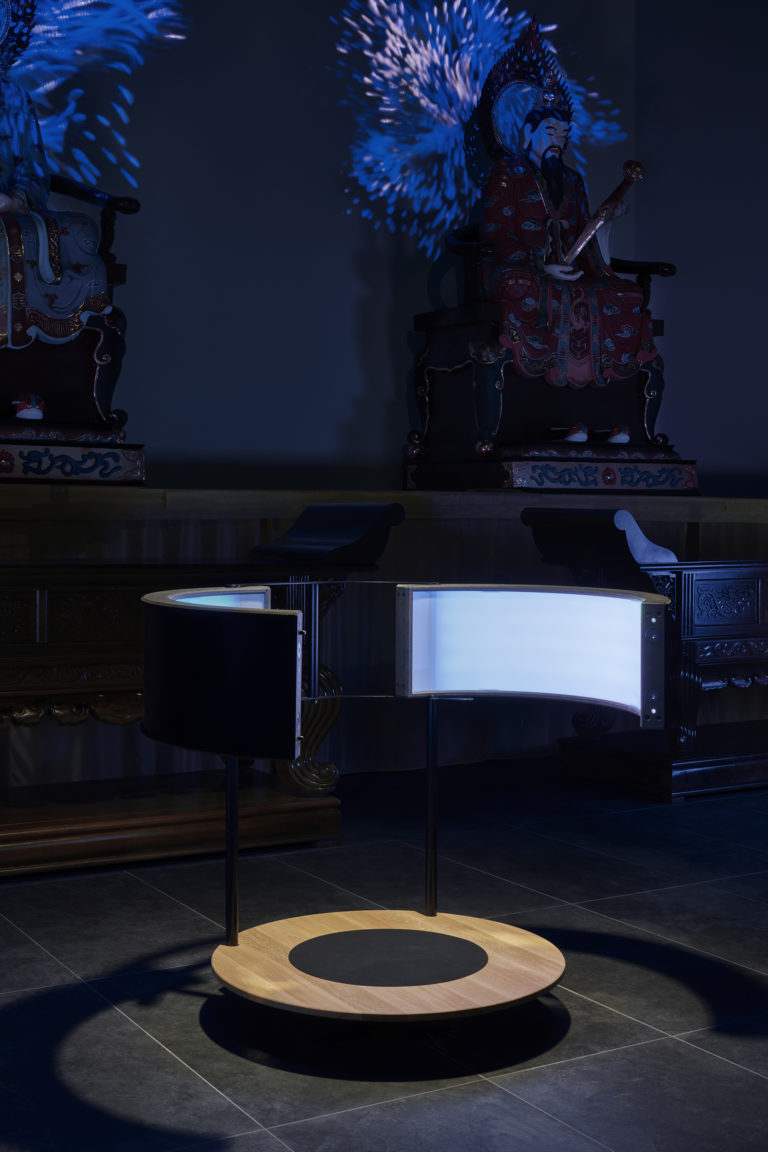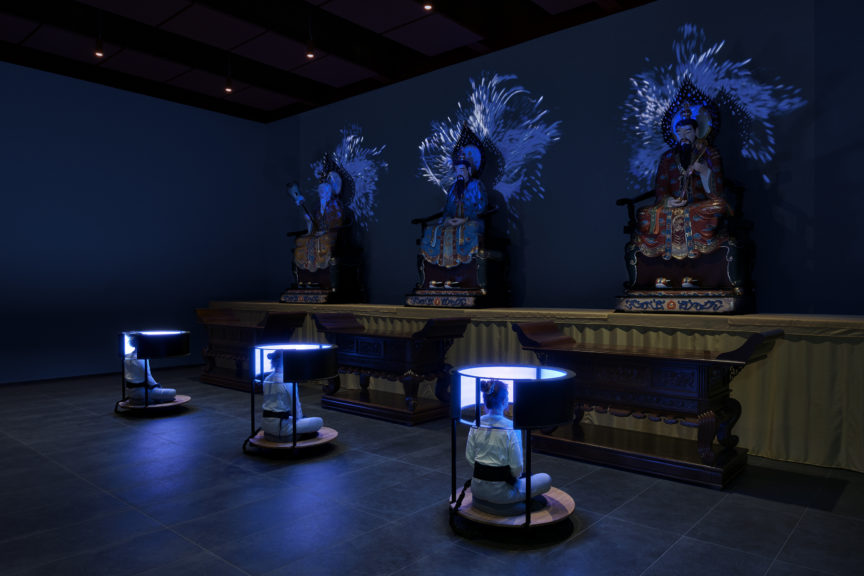The Ming Shan Digital Experience opens to the public
The EPFL+ECAL Lab, the design research centre of EPFL, unveiled in Bullet (Vaud) on Tuesday, 2 November the result of its research and innovation partnership with Ming Shan, the first Taoist centre in Europe: an immersive installation capable of promoting meditation by generating light and sound from body signals. Science, technology and design combine with a multi-millennial culture to respond to a social challenge. Recently honoured by the Siggraph World Conference in Los Angeles, the project is also one of the finalists for the Swiss Design Prize.
The story seems almost surreal, out of time. At 1,200 metres above sea level, near the ridges of the Jura Mountains in the Canton of Vaud, the new lay Taoist centre Ming Shan towers above the clouds. At the end of the courtyard is the temple. Inside, three traditional statues of immortals face three contemporary circles of light. Technology, design and science come together here with a culture, philosophy and practices whose roots go back more than 2,000 years. After three years of research, creation and experimentation, the Ming Shan Digital Experience set-up dedicated to meditation has been officially inaugurated. It is now part of the practices of this site open to the public, as the EPFL+ECAL Lab delivers its research findings.
The circle of light gives the impression of floating above a very sober wooden seat. Each of the three stations welcomes a participant for a meditation session. The intensity of light, rhythms and colours change during meditation depending on the physiological parameters of the participants, such as breathing or heart rate. This so-called “multimodal biofeedback” system thus acts in real time, in a customized manner, on the phases of concentration and relaxation essential to such a practice.
The initial observations carried out in China made it possible to take an additional step: to address the collective dimension of meditation. To meet this challenge, each station acts like a musical instrument, emitting vibrations inspired by traditional sounds. The installation thus adds to the individual support a collective resonance through a soundscape also generated in real time from body signals. The perception of a meditation session finally extends to the temple’s architecture with a translation of the signals into animated visual representations projected around the statues. This threefold impact – individual, collective and spatial – is a world first.
The collaboration between the Ming Shan Centre and the EPFL+ECAL Lab required in-depth work to understand, compare and associate the codes and references of Taoism, one of the founding cultures of meditation, with knowledge of the contemporary disciplines of science and design. The collaboration made it possible to conduct a study on the impact of this device, according to validated research protocols in psychology. The knowledge acquired now opens unprecedented horizons for acting on our well-being. They foreshadow reactive furniture concepts dedicated to our daily lives, as well as a capacity for action in spaces highly densified by evolving light inputs.




Direction
MAS in Design Research for Digital Innovation
Art Direction & Project Management
Software Engineering
Hardware & Firmware Engineering, Sound Design
Industrial Design
Matthieu Girel, Béatrice Durandard
UX/UI Psychology
Photography
© EPFL+ECAL Lab / Daniela&Tonatiuh
PARTNERS
Main Partner
Ming Shan Taoist Centre
Scientific Partners
CSEM, Signal Processing & Control Systems Group
Applied signal processing group, EPFL
Psychology institute, University of Fribourg
With the support of Canton de Vaud



